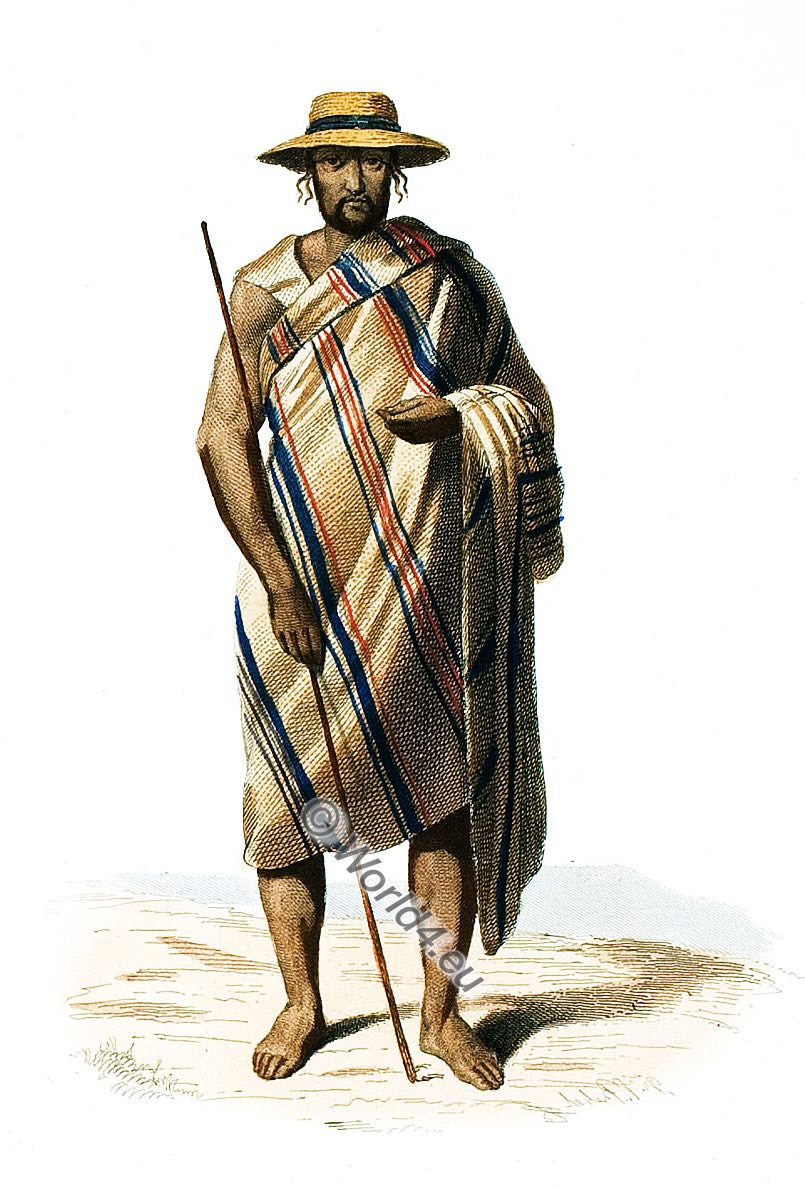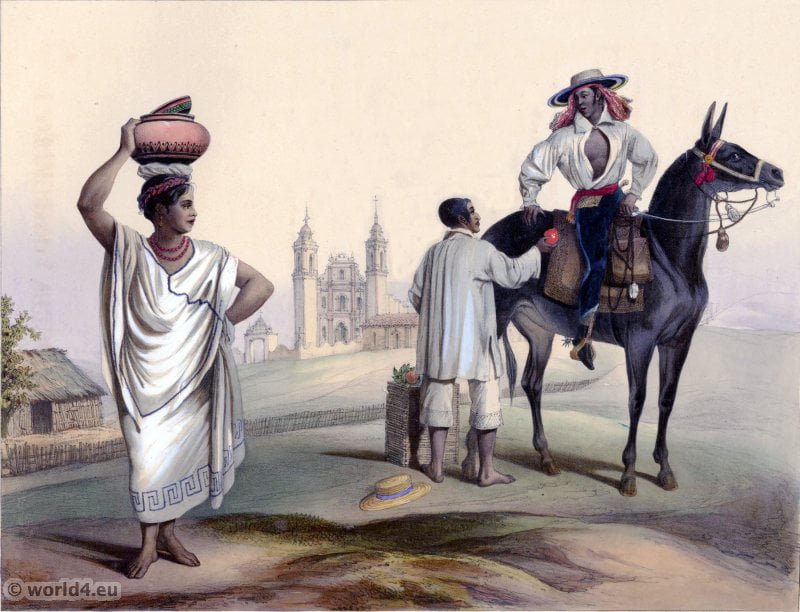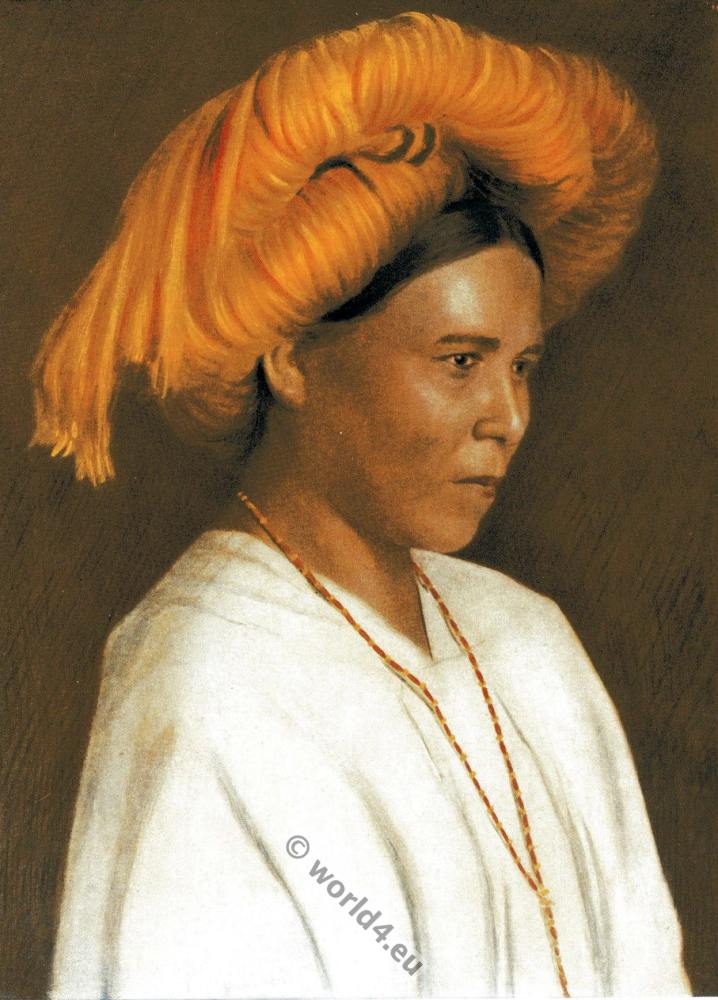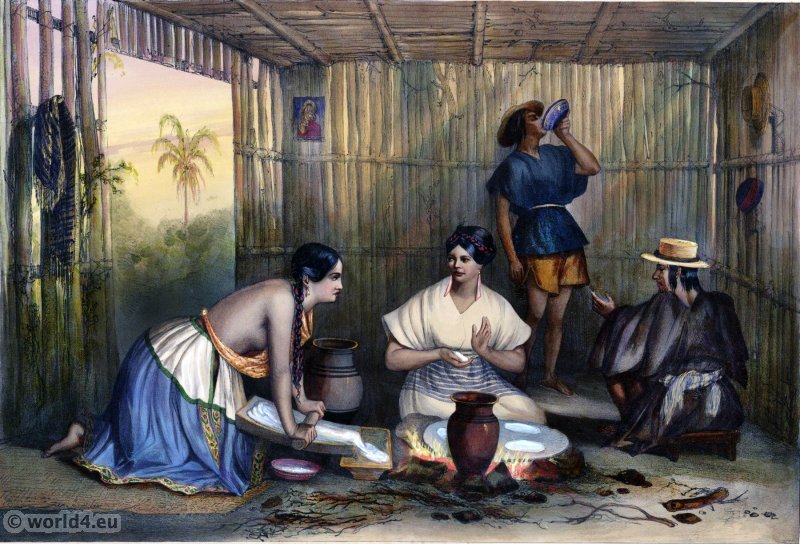The mask is 17,0 cm high and 15,4 cm wide, straight at the top and rounded at the corners; the side edges run vertically downwards and only bend forwards at the lower edge of the lower jawbone, with which the mask ends, so that the front view is rather square, similar to other masks made of other materials, which come from Mexico.
The mask forms a single wall of 1,0 – 1,5 cm thickness, only at the upper jaw bone, near the anterior nasal opening, the thickness is increased up to 3 cm. The openings present are the crevices of the eyes, nose and mouth. Of these, that of the nose, as it is now, was in any case not of this nature in the past.
In any case, it was once largely closed by an artificial nose, of which traces exist and which was covered with mosaic like the rest of the face. The possibility that the eye openings were also closed in the past by means of a glass-like body – so as not to hinder vision – is suggested by the fact that behind the circular 0,6 cm eye opening, which is imperceptibly extended into points at the sides, a narrower circular rim, interrupted linearly at the sides, protrudes like a fold, so that it appears as if another body could have been attached in these openings.
In contrast, the mouth is probably in its original condition, apart from the loss of several of the teeth, which used to be complete, and apart from minor damage to the mosaic border.
In order to produce the simple wall, all the bones belonging to the actual skull, apart from the lowest parts of the frontal bone, were removed, and even of the facial bones only those were preserved which were suitable for forming the actual facial surface.
According to the bones, the mask is made up of the following components: the roof of the eye sockets and a horizontal strip 2,2 cm wide in the centre (2,7 cm wide on the sides) of the adjacent scale of the frontal bone, the largest part of the upper jaw bone, the zygomatic bone, the zygomatic process, which appears to be cut through near the scale of the temporal bone, and the largest part of the lower jaw bone.
The forward parts of the skull have been sawn off just behind the anterior edges of the eye sockets and vertically through the centre of the parts of the maxillary bones resting on the frontal bone. The palate is sawed through transversely 3 cm from the anterior edge of the maxillary bones, in such a linear fashion that the parts of the third molars still protruding to the rear were also removed by grinding. The lower jaw bone did not escape the saw’s action either. Behind the third molars, which were also ground down, both halves of the lower jaw bone were sawn through lengthwise at an angle, so that above all the obstructive rear projections with the joint buttons were removed.
In this way, a bony base frame was obtained which, especially given the spacious proportions of the skull (the inner width of the frontal bone at the level of the lower edge of its scales, for example, is 13,8 cm), was well suited and also apparently specially calculated to allow an ordinary face, even with the naturally protruding parts, the nose and the mouth, to enter the mask to its full depth.
The gaps left by the bone wall are lined with slices of light-coloured, almost spongy soft wood, the spaces in between are further filled with reddish resin, such as the sides between the lower and upper jaw and the frontal bone. The bone surfaces on the back are partly coloured brown-red, the teeth are filled with putty.
The most precious feature is the decoration of the front with moulded work. To produce this, the entire front is covered with a 1-5 mm thick layer of dark brown resin, in which small stone plates, generally ımm thick and smoothed on both sides, are inserted in such a way that when the plates break off, a smooth impression remains in the resin surface, indicating the exact shape of the stone.
The platelets vary in size from 1 sq mm to 20 mm long and 15 mm wide. The average and most common surface area of the pebbles is 10 – 15 square millimetres. The middle part of the face above the mouth in particular is covered with such small stones, which are also generally the more beautiful in colour.
The stones are found in every shape from triangles to irregular pentagons, cut-out pentagons, hexagons and octagons, with both straight and curved contours, although the rectangular shape is the most common. Among the larger ones, the simple pentagon and hexagon predominate. The stones are masterly, without gaps, and apparently not in a predetermined shape, but in such a way that they were often given the most appropriate shape only at the moment of joining with others. The masonry of certain older buildings is similarly joined. The surface of the masonry work is not polished; nevertheless, the parts fit together perfectly even with their levels.
In this technique, the face is musically covered with turquoise. The colour of the stones varies from beautiful sky blue (especially the smaller ones) to pale green. In this way a facial surface is achieved which is in no way inferior in formal truth to the fleshy face of a living person. A small black stone preserved on the forehead and the trace of a similar stone that has now been broken out show that the forehead was vertically ornamented with black lines.
The edge around the teeth, square and sharp-edged, is lined with red plates (of conchylia shell), which emphasise the lips. The surfaces to the sides of the mouth are also decorated in a peculiar way. In these parts, the blue-greenish stone panelling of the chin is raised against the mosaic surfaces of the cheeks, with two ornamental arches that roughly resemble the lateral ends of the lower jawbone, without probably imitating this shape. Most of the forehead and the right side of the chin are the only parts that are now more extensively denuded of mosaic and resin. The mask is better preserved than it appears in the illustration.
The centre of the top edge and the four corners are drilled through. One of the two lower holes has been covered with resin. The two upper side holes are connected by an apparently older bast cord, which, however, at 19 cm long, no longer seems to have the original length and shines through the openings of the nose and the right eye in the illustration (see the pale line).
Received in exchange from the ducal museum in Brunswick.
Source: Publications from the Royal Museum of Ethnology: Volume 1, Issue 1. Berlin State Museums. Berlin: published by W. Spemann 1889.

Discover more from World4 Costume Culture History
Subscribe to get the latest posts sent to your email.







